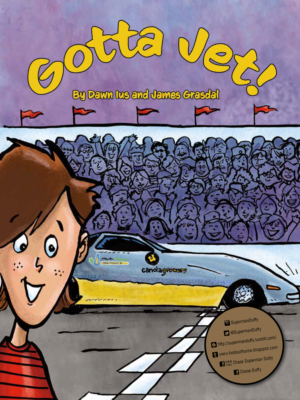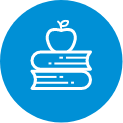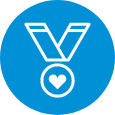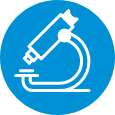
Grade 4 Learning Objectives for “Gotta Jet”
Jump to Subject

English Language Arts
General Learning Objective
1. Students will listen, speak, read, write, view and represent to explore thoughts, ideas, feelings and experiences.
Specific Learning Objectives
1.1. Discover and Explore
Express ideas and develop understanding
- Compare new ideas, information and experiences to prior knowledge and experiences
- Ask questions, paraphrase and discuss to explore ideas and understand new concepts
- Share personal responses to explore and develop understanding of oral, print and other media texts
Experiment with language and forms
- Discuss and compare the ways similar topics are developed in different forms of oral, print and other media texts
1.2 Clarify and Extend
Consider the ideas of others
- Identify other perspectives by exploring a variety of ideas, opinions, responses and oral, print and other media texts
Combine ideas
- Use talk, notes, personal writing and representing to record and reflect on ideas, information and experiences
General Learning Objective
2. Students will listen, speak, read, write, view and represent to comprehend and respond personally and critically to oral, print and other media texts.
Specific Learning Objectives
2.1 Use Strategies and Cues
Use prior knowledge
- Use ideas and concepts, developed through personal interests, experiences and discussion, to understand new ideas and information
- Explain how the organizational structure of oral, print and other media texts can assist in constructing and confirming meaning
Use comprehension strategies
- Comprehend new ideas and information by responding personally and discussing ideas with others
- Monitor understanding by confirming or revising inferences and predictions based on information in text
Use textual cues
- Distinguish differences in the structural elements of texts, such as letters and storybooks, to access and comprehend ideas and information
Use phonics and structural analysis
- Identify and know the meaning of some frequently used prefixes and suffixes
- Apply knowledge of root words, compound words, syllabication, contractions and complex word families to read unfamiliar words in context
- Integrate knowledge of phonics and sight vocabulary with knowledge of language and context clues to read unfamiliar words in context
2.2 Respond to Texts
Experience various texts
- Experience oral, print and other media texts from a variety of cultural traditions and genres, such as personal narratives, plays, novels, video programs, adventure stories, folk tales, informational texts, mysteries, poetry and CDROM programs
- Discuss a variety of oral, print or other media texts by the same author, illustrator, storyteller or filmmaker
- Retell events of stories in another form or medium
- Make general evaluative statements about oral, print and other media texts
Construct meaning from texts
- Connect the thoughts and actions of characters portrayed in oral, print and other media texts to personal and classroom experiences
- Identify the main events in oral, print and other media texts; explain their causes, and describe how they influence subsequent events
- Compare similar oral, print and other media texts and express preferences, using evidence from personal experiences and the texts
- Develop own opinions based on ideas encountered in oral, print and other media texts
Appreciate the artistry of texts
- Explain how language and visuals work together to communicate meaning and enhance effect
2.3 Understand Forms, Elements and Techniques
Understand forms and genres
- Describe and compare the main characteristics of a variety of oral, print and other media texts
Understand techniques and elements
- Identify and explain connections among events, setting and main characters in oral, print and other media text
General Learning Objective
3. Students will listen, speak, read, write, view and represent to manage ideas and information.
Specific Learning Objectives
3.2 Select and Process
Access information
- Identify information sources that inform, persuade or entertain, and use such sources appropriately
Evaluate sources
- Recall important points, and make and revise predictions regarding upcoming information
3.3 Organize, Record and Evaluate
Organize information
- Organize ideas and information, using appropriate categories, chronological order, cause and effect, or posing and answering questions
- Organize oral, print and other media texts into sections that relate to and develop the topic
Record information
- Paraphrase information from oral, print and other media sources
Evaluate information
- Examine gathered information to identify if more information is required; review new understanding
General Learning Objective
4. Students will listen, speak, read, write, view and represent to enhance the clarity and artistry of communication.
Specific Learning Objectives
4.3 Present and Share
Demonstrate attentive listening and viewing
- Connect own ideas, opinions and experiences to those communicated in oral and visual presentations
- Give constructive feedback, ask relevant questions, and express related opinions in response to oral and visual presentations

Health
Topic: Learning Strategies
General Learning Objective
Life Learning Choices
Students will use resources effectively to manage and explore life roles and career opportunities and challenges
Specific Learning Objectives
L–4.4
- Distinguish among, and set, different kinds of goals; e.g., short-term and long-term personal goals
Topic: Life Roles and Career Development
General Learning Objective
Life Learning Choices
Students will use resources effectively to manage and explore life roles and career opportunities and challenges
Specific Learning Objectives
L–4.5
- Relate personal interests to various occupations

Science
General Learning Objective
4–3 Investigate a practical problem, and develop a possible solution.
Specific Learning Objectives
Focus
Identify the purpose of problem-solving and construction activities:
- What problem do we need to solve? What needs must be met?
Explore and Investigate
- Identify steps followed in completing the task and in testing the product
- Identify materials and how they are used
- Attempt a variety of strategies and modify procedures, as needed (troubleshoot problems)
- Engage in all parts of the task and support the efforts of others
- Identify, with guidance, sources of information and ideas and access information and ideas from those sources. Sources may include library, classroom, community and computer-based resources
Reflect and Interpret
- Communicate with group members, showing ability to contribute and receive ideas
- Evaluate a product, based on a given set of questions or criteria. The criteria/questions may be provided by the teacher or developed by the students. Example criteria include:
- Effectiveness—Does it work?
- Reliability—Does it work every time?
- Durability—Does it stand up to repeated use?
- Effort—Is it easy to construct? Is it easy to use?
- Safety—Are there any risks of hurting oneself in making it or using it?
- Use of materials—Can it be made cheaply with available materials? Does it use recycled materials, and can the materials be used again?
- Identify possible improvements to the product
- Identify new applications for the design or method of construction.
General Learning Objective
4–4 Demonstrate positive attitudes for the study of science and for the application of science in responsible ways.
Specific Learning Objectives
Students will show growth in acquiring and applying the following traits:
- Curiosity
- Confidence in personal ability to explore materials and learn by direct study
- A willingness to work with others in shared activities and in sharing of experiences
- Appreciation of the benefits gained from shared effort and cooperation
- Respect for living things and environments, and commitment for their care.
Topic A: Waste and Our World
General Learning Objective
4–5 Recognize that human activity can lead to the production of wastes, and identify alternatives for the responsible use and disposal of materials.
Specific Learning Objectives
8. Identify alternative materials and processes that may decrease the amount of waste produced; e.g., reducing wastage of food, using both sides of a sheet of paper
9. Identify ways in which materials can be reused or recycled, including examples of things that the student has done.
11. Identify actions that individuals and groups can take to minimize the production of wastes, to recycle or reuse wastes and to ensure the safe handling and disposal of wastes
Topic B: Wheels and Levers
General Learning Objective
4–6 Demonstrate a practical understanding of wheels, gears and levers by constructing devices in which energy is transferred to produce motion
Specific Learning Objectives
2. Compare the wheel and the roller, and identify examples where each are used.
3. Construct devices that use wheels and axles, and demonstrate and describe their use in:
- Model vehicles
- Pulley systems
- Gear systems.
4. Construct and explain the operation of a drive system that uses one or more of the following:
- Wheel-to-wheel contact
- A belt or elastic
- A chain
- Cogs or gears
5. Construct and explain the operation of a drive system that transfers motion from one shaft to a second shaft, where the second shaft is:
- Parallel to the first
- At a 90° angle to the first.
Students who have achieved this expectation will be aware of changes in speed and direction that result from different ways of linking components. Introduction of gear ratios, however, is not recommended at this grade level. Students will have an opportunity to develop the concept of ratio as part of their junior high mathematics program.
Topic C: Building Devices and Vehicles that Move
General Learning Objective
4–7 Construct a mechanical device for a designated purpose, using materials and design suggestions provided.
Topic C: Building Devices and Vehicles that Move
General Learning Objective
4–8 Explore and evaluate variations to the design of a mechanical device, demonstrating that control is an important element in the design and construction of that device.
Specific Learning Objectives
1. Design and construct devices and vehicles that move or have moving parts—linkages, wheels and axles
2. Use simple forces to power or propel a device; e.g., direct pushes, pulls, cranking mechanisms, moving air, moving water and downhill motion.
3. Design and construct devices and vehicles that employ energy-storing or energy-consuming components that will cause motion; e.g., elastic bands, springs, gravity, wind, moving water
4. Recognize the need for control in mechanical devices, and apply control mechanisms where necessary
5. Compare two designs, identifying the relative strengths and weaknesses of each.
6. Identify steps to be used in constructing a device or vehicle, and work cooperatively with other students to construct the device or vehicle
7. Design and construct several different models of a device and evaluate each model, working cooperatively with other students. Suggested evaluation criteria are identified under the Specific Learner Expectations, Reflect and Interpret, page B.18.
